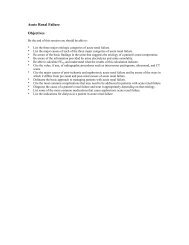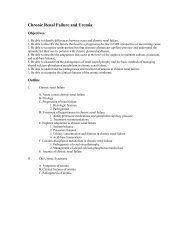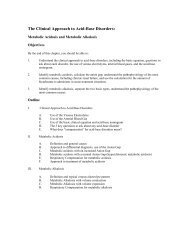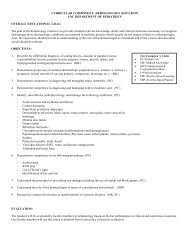scatter diagram
scatter diagram
scatter diagram
You also want an ePaper? Increase the reach of your titles
YUMPU automatically turns print PDFs into web optimized ePapers that Google loves.
Considerations<br />
. ln what kind of situations might you use a <strong>scatter</strong> <strong>diagram</strong>? Here are some<br />
examples:<br />
- Variable A is the temperature of a reaction after 15 minutes. Variable B<br />
measures the color of the product. You suspect higher temperature makes<br />
the product darker. Plot temperature and color on a <strong>scatter</strong> <strong>diagram</strong>.<br />
- Variable A is the number of employees trained on new software, and variable<br />
B is the number of calls to the computer help line. You suspecthat more<br />
training reduces the number of calls. Plot number of people trained versus<br />
number of calls.<br />
- To test for autocorrelation of a measurement being monitored on a control<br />
chart, plot this pair of variables: Variable A is the measurement at a given<br />
time. Variable B is the same measurement, but at the previous time' If the<br />
<strong>scatter</strong> <strong>diagram</strong> shows correlation, do another <strong>diagram</strong> where variable B is the<br />
measurement two times previously. Keep increasing the separation between<br />
the two times until the <strong>scatter</strong> <strong>diagram</strong> shows no correlation.<br />
. Even if the <strong>scatter</strong> <strong>diagram</strong> shows a relationship, do not assume that one variable<br />
caused the other. Both may be influenced by a third variable'<br />
. When the data are plotted, the more the <strong>diagram</strong> resembles a straight line,<br />
the stronger the relationship. See Figures 5.39 through 5.42, page 198 in the<br />
crtrrelation analysis entry, for examples of the types of graphs you might see<br />
and their interpretations.<br />
. If a line is not clear, statistics (N and Q) determine whether there is reasonable<br />
certainty that a relationship exists. If the statistics say that no relationship exists,<br />
the pattern could have occurred by random chance.<br />
. If the <strong>scatter</strong> <strong>diagram</strong> shows no relationship between the variables, consider<br />
whether the data might be stratified. See stratification for more details.<br />
. If the <strong>diagram</strong> shows no relationship, consider whether the independent (x-axis)<br />
variable has been varied witlely. Sometimes a relationship is not apparent because<br />
the data don't cover a wide enough range.<br />
. Think creatively about how to use <strong>scatter</strong> <strong>diagram</strong>s to discover a root cause.<br />
. See graph for more information about graphing techniques. Also see the<br />
graph decision tree (Figure 5.68, page 216) in that section for guidance on<br />
when to use <strong>scatter</strong> <strong>diagram</strong>s and when other graphs may be more useful for<br />
your situation.<br />
. Drawing a <strong>scatter</strong> <strong>diagram</strong> is the first step in looking for a relationship between<br />
variables. See correlation anolysis and regression analysis fbr statistical methods<br />
vou can use.















